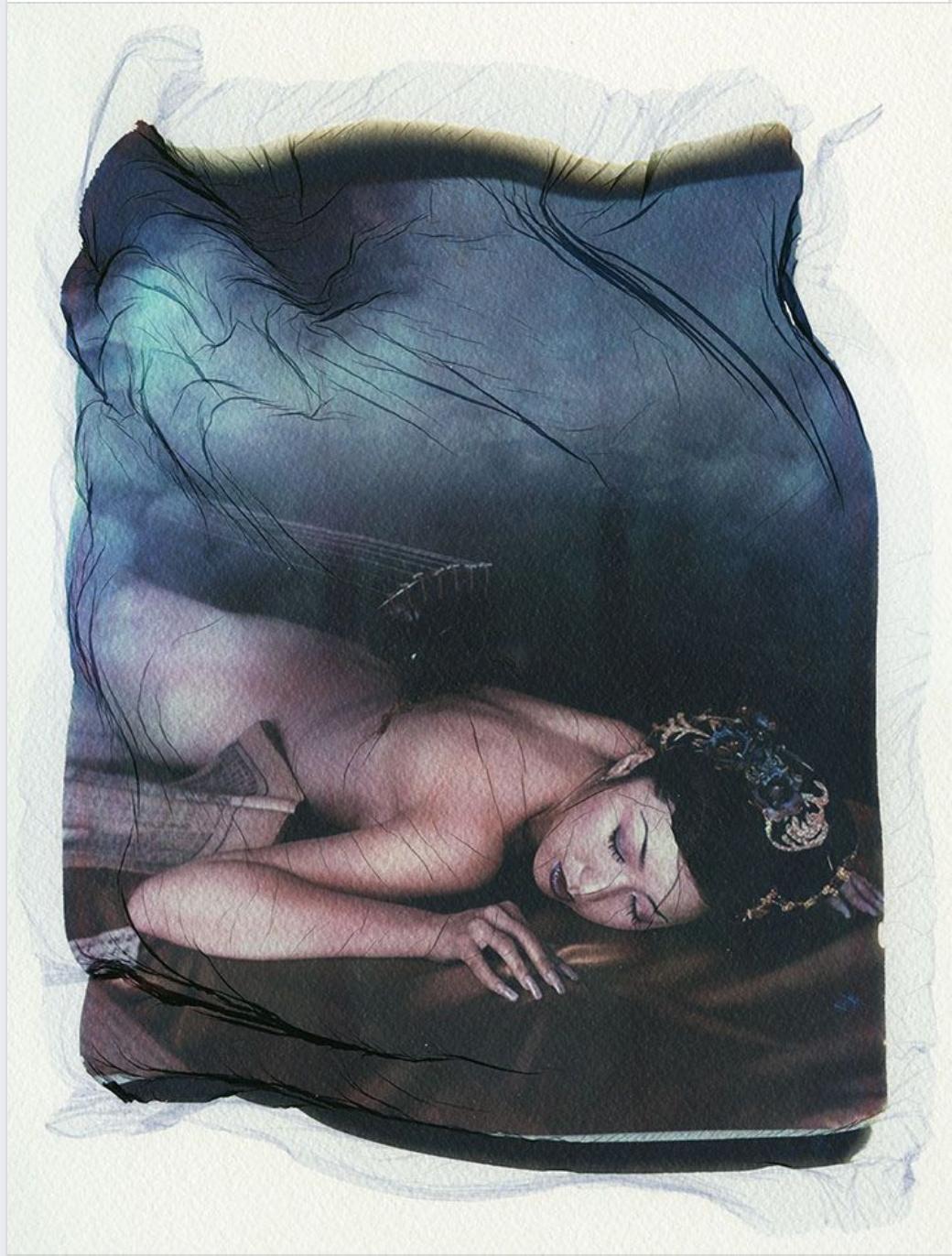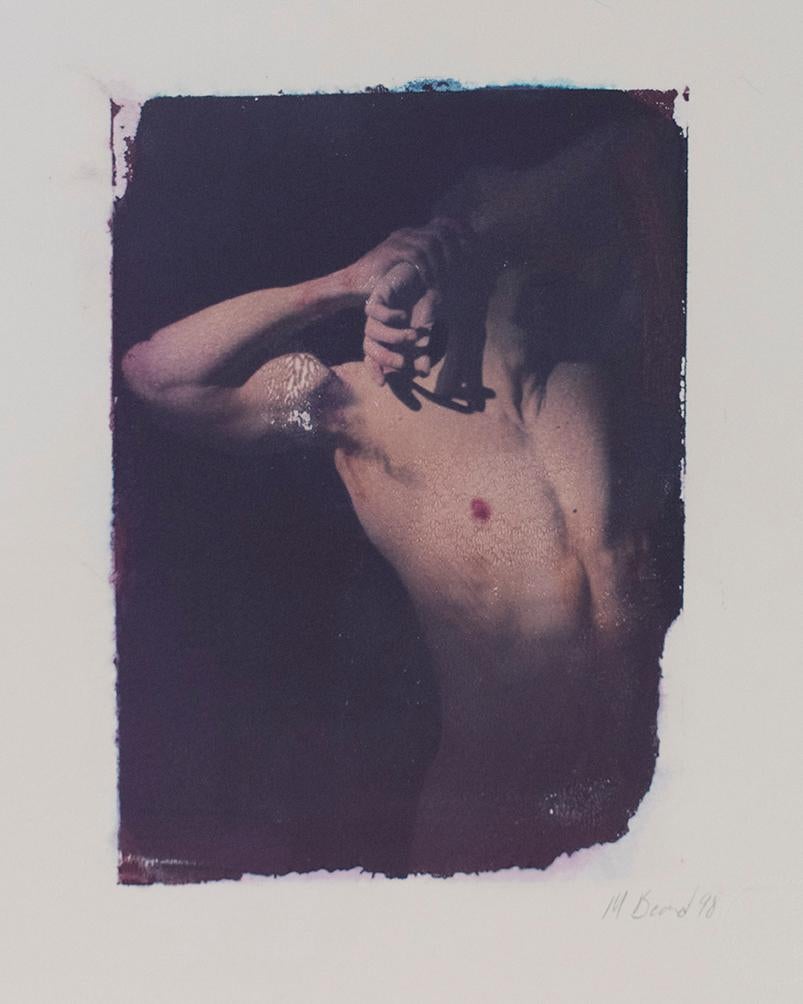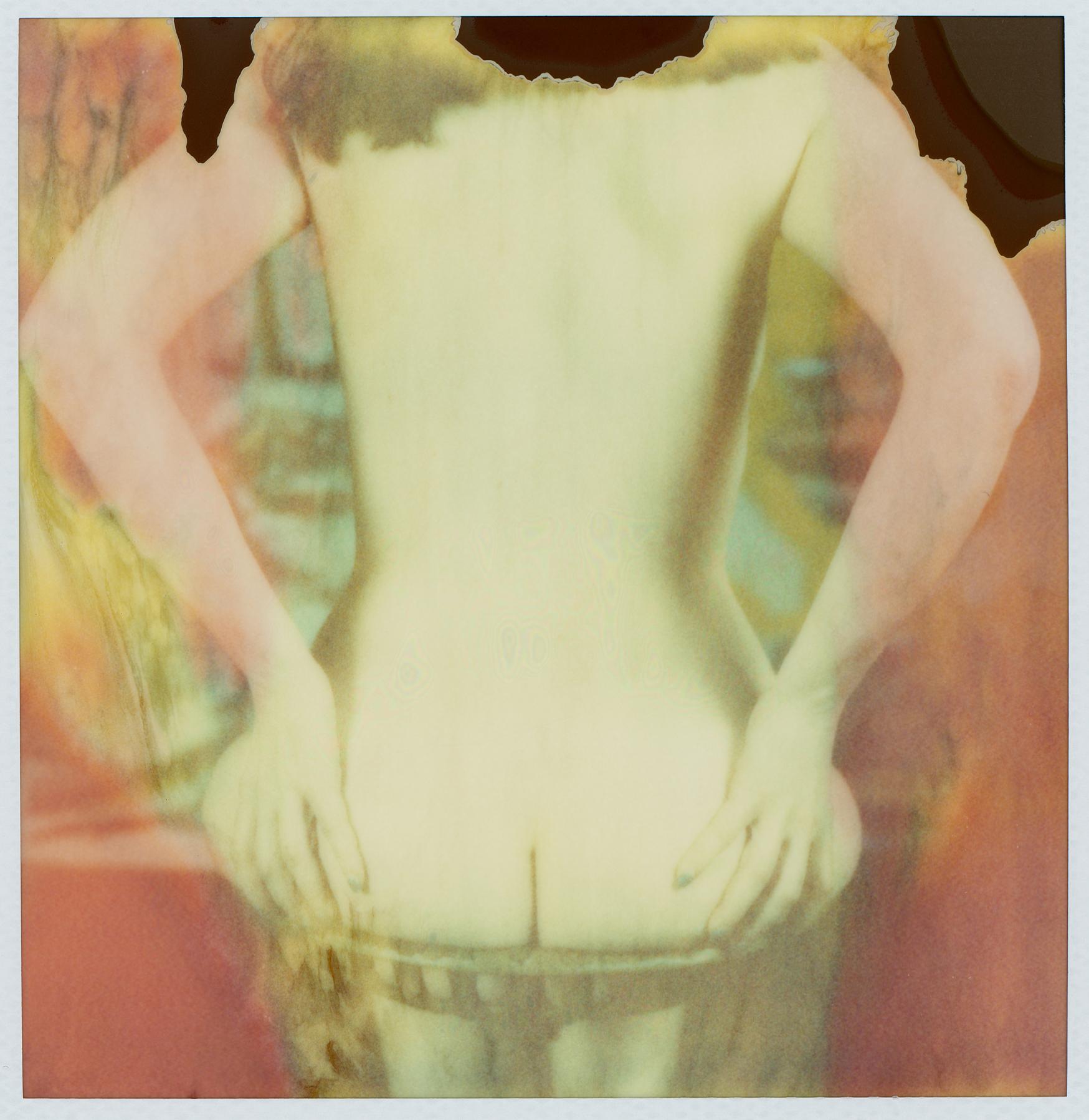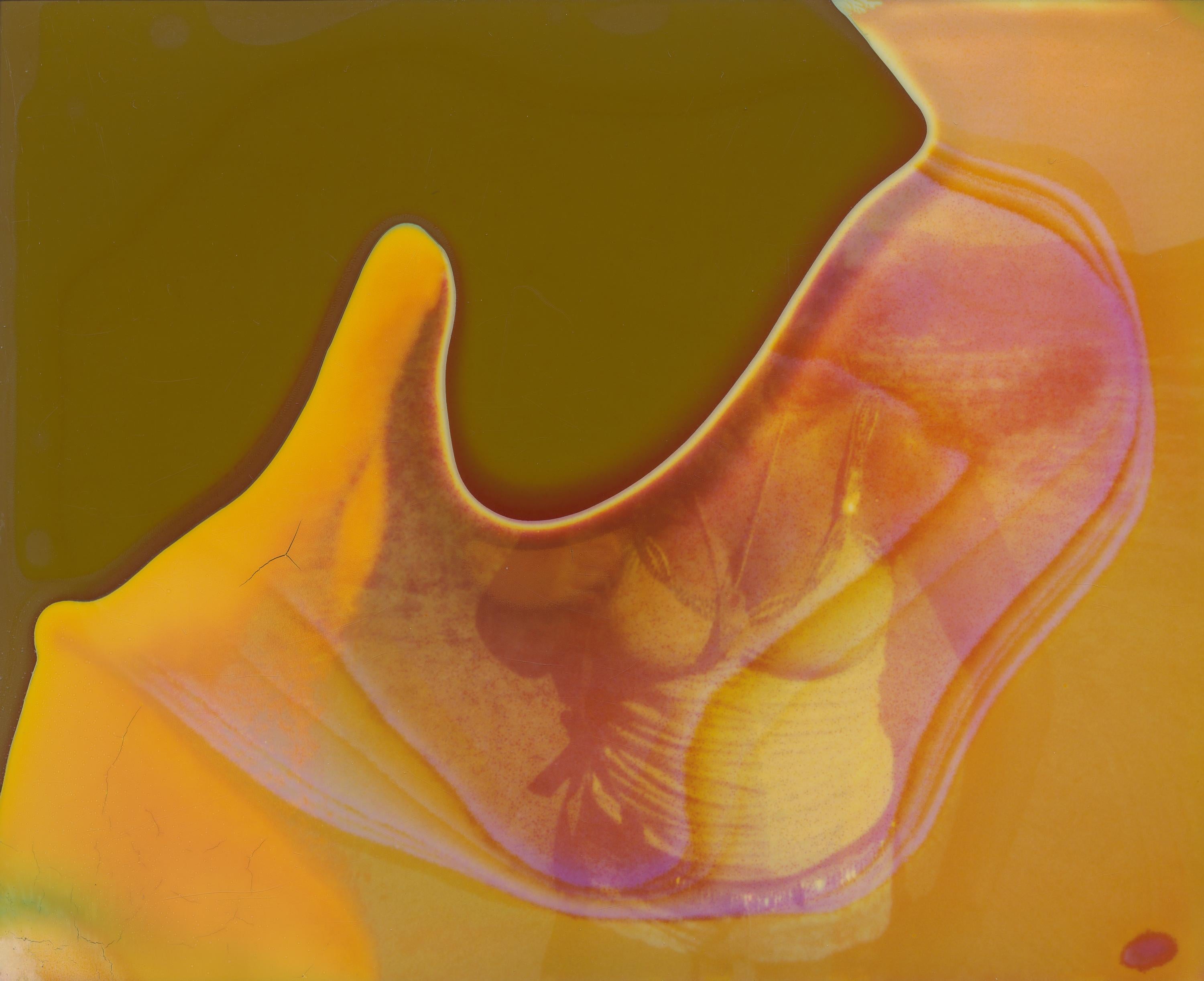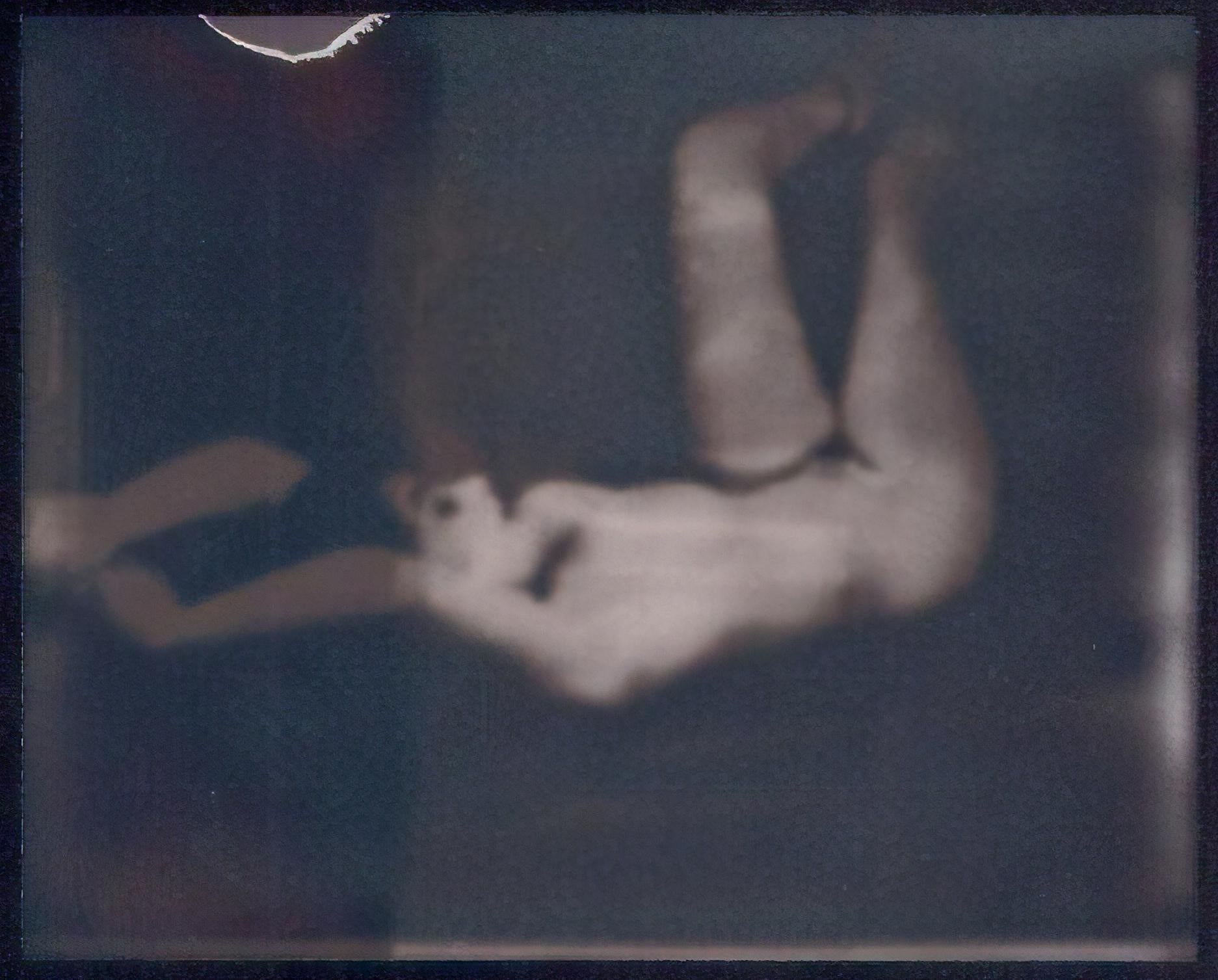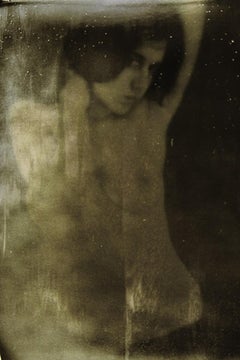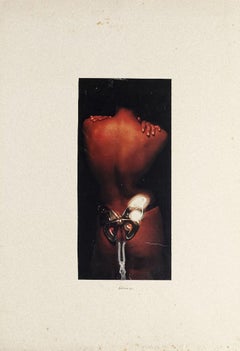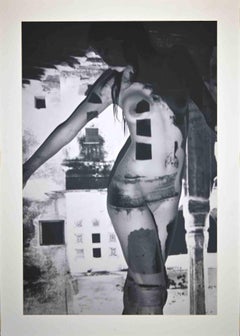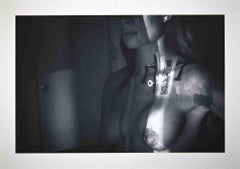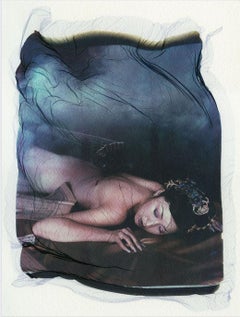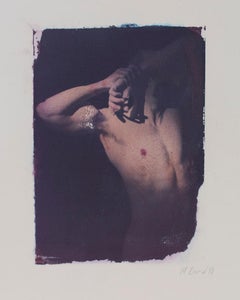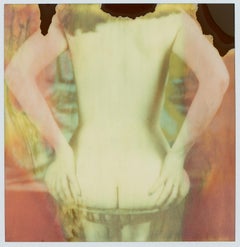Items Similar to Dye Transfer Study
Want more images or videos?
Request additional images or videos from the seller
1 of 3
Robert GrahamDye Transfer Study1970
1970
$1,002.41
£750.33
€850
CA$1,379.60
A$1,537.71
CHF 806.79
MX$18,777.98
NOK 10,215.65
SEK 9,655.35
DKK 6,470.80
About the Item
Dye Transfer Study is an original artwork realized by Robert Graham in 1970. It is a silver print photographic contact sheet, handcolored with pink acrylic paint. Hand signed, numbered and dated on back in pencil. Edition of 75 prints. Very good conditions.
It is an interesting artwork realized by Robert Graham in 1970's. It represents a female nude in an interior space with a mirror on her back. The artist experiments the colors through the transfer on a photo. On the left side, there is a white shape near the woman.
Robert Graham (1938 - 2008) was a Mexican sculptor, best known for his large-scale public works and female nudes. His many sculptures of women were specific and personal, each one documenting a particular woman in a particular pose. Born on August 19, 193,8 in Mexico City, Mexico, he studied art first at San Jose State College and then at the San Francisco Art Institute.His work is included in the collections of several museums, including the Los Angeles County Museum of Art, the Whitney Museum of American Art in New York, and the Hirshhorn Museum and Sculpture Garden in Washington, D.C.
- Creator:Robert Graham (1938 - 2008, American)
- Creation Year:1970
- Dimensions:Height: 9.45 in (24 cm)Width: 11.03 in (28 cm)
- Medium:
- Movement & Style:
- Period:
- Condition:Insurance may be requested by customers as additional service, contact us for more information.
- Gallery Location:Roma, IT
- Reference Number:Seller: M-955621stDibs: LU65033004551
About the Seller
4.9
Platinum Seller
Premium sellers with a 4.7+ rating and 24-hour response times
1stDibs seller since 2017
7,627 sales on 1stDibs
Typical response time: 2 hours
- ShippingRetrieving quote...Shipping from: Roma, Italy
- Return Policy
Authenticity Guarantee
In the unlikely event there’s an issue with an item’s authenticity, contact us within 1 year for a full refund. DetailsMoney-Back Guarantee
If your item is not as described, is damaged in transit, or does not arrive, contact us within 7 days for a full refund. Details24-Hour Cancellation
You have a 24-hour grace period in which to reconsider your purchase, with no questions asked.Vetted Professional Sellers
Our world-class sellers must adhere to strict standards for service and quality, maintaining the integrity of our listings.Price-Match Guarantee
If you find that a seller listed the same item for a lower price elsewhere, we’ll match it.Trusted Global Delivery
Our best-in-class carrier network provides specialized shipping options worldwide, including custom delivery.More From This Seller
View AllPolaNude 1 - Photo by Giulio Gonella - 2020
Located in Roma, IT
This beautiful photograph PolaNude 1 was shot by the Italian photographer Giulio Gonella.
Print on canvas from the series PolaNudes, open edition. Hand-signed by the artist on the back on the lower right.
Indulge in the photographic lens of a man, his gaze, naked. The body that is exposed, however, paradoxically does not emerge, it is not the protagonist. Between the bumps and the fragrant hollows, the “fil...
Category
2010s Contemporary Figurative Photography
Materials
Photographic Paper
Nude - Collage by Sergio Barletta - 1975
By Sergio Barletta
Located in Roma, IT
Nude is an original collage artwork, realized by Sergio Barletta in 1975.
Hand-signed on the lower center and dated.
In very good conditions, except for some small diffused stain a...
Category
1970s Contemporary Mixed Media
Materials
Mixed Media
Denuded - Photograph by Nikhil Bhandari - 2008
Located in Roma, IT
Denuded by Future from Beyond Eros V is an original black and white photograph realized by Nikhil Bhandari (Rajasthan,1969).
Hand-signed both on the lower of the artwork and rear an...
Category
Early 2000s Contemporary More Art
Materials
Paper, Photographic Paper
Transmutation Within - Photograph by Nikhil Bhandari - 2008
Located in Roma, IT
Transmutation within, from Beyond Eros II is an original black and white photograph realized by Nikhil Bhandari (Rajasthan,1969).
Hand-signed and titled, artist's proof plus 3 on the rear.
Included a Passepartout: 61 x 86 cm.
Very Good conditions.
Nikhil Bhandari (Rajasthan,1969), an Indian artist born in Jaipur (Rajasthan) on December 21, 1969, is a professor of Visual Education at the BFA Bombay University and since 1991 lives and works in Jaipur. His works have been published in the most important magazines around the world: Play Boy...
Category
Early 2000s Contemporary More Art
Materials
Paper, Photographic Paper
"Inner Self"" - Mixed Media by Danielle Mano Bella - 2020
Located in Roma, IT
"Inner Self" - 2020 , Mix Media , Limited Edition - 1/5
This Creation describes and deals with questions surrounding social conventions and describes an image in which the male shado...
Category
2010s Contemporary Figurative Photography
Materials
Mixed Media
Nude - Original Lithograph by Sergi Barletta - 1970s
By Sergio Barletta
Located in Roma, IT
Nude is an original lithograph artwork, realized by Sergio Barletta, hand-signed, edition of 100 prints.
In very good conditions.
Here the artwork represents a different pose of n...
Category
1970s Contemporary More Prints
Materials
Lithograph
You May Also Like
Untitled, Polaroid Emulsion Transfer, Contemporary, 21st Century, Nude
By xulong zhang
Located in Morongo Valley, CA
'Untitled' (Chinese Classical), 2003, Edition of 10 plus 2 Artist Proofs, digital C-Print, POLAROID 809 Emulsion Transfer, 32 cm x 26cm, not mounted, Signed, embossed stamp and artis...
Category
2010s Conceptual Color Photography
Materials
Photographic Paper, C Print, Color, Polaroid
Untitled 17 (Polaroid Transfer of Standing Young Nude Man on Rives BFK)
By Mark Beard
Located in Hudson, NY
image size: 10 x 8 inches
Standing young nude male with dark background
Polaroid Transfer on 22 x 15 inch Rives BFK paper, unframed
signed SM Beard in pencil on bottom right corner....
Category
1990s Contemporary Nude Photography
Materials
Archival Paper, Polaroid
Untitled, 21st Century, Polaroid, Nude Photography
By xulong zhang
Located in Morongo Valley, CA
'Untitled', 2010,
Edition of 10 plus 2 Artist Proofs, digital C-Print, based on a Polaroid 108 Film shifting Compound material, 22 x 15cm, Signed, embossed stamp and artist certificate, not mounted.
Xulong Zhang
Short Bio:
He has been engaged in fashion portrait photography for 30 years and loves Polaroid photography. In 2000, he began to develop Polaroid photography and traveled to 34 countries for photography.
Vita:
1999 Has won the title “Ten Elites” in the 3rd China Portrait Photography.
2000 Named the World Chinese Artist, known as “The Prince of Album”
2001 September, CCTV special report on “Zhang Xulong’s Body Art Photography” gained strong feedback from the community.
2002 January, published “Strategies for Commercial Portrait Photograph” by Zhejiang Photography Publishing.
2002 February, launched the concept of “Tang Yun” and greatly accepted by the market. His idea has spread across whole China’s photography industry.
2002 July, launched the concept of “Picasso’s scene backdrop” for kids photography and shocking the whole industry.
2002 August, published “Ms.Tang’s Body Art Portrait Album”, the first female body photography in China, by People’s Arts Publishing
2002 September, a personal exhibition entitled “seeing memory” in the ancient city of Shanxi Province, the 2nd session of the Pingyao International Photography Festival.
In December of 2002, he was invited to give lectures in Malaysia and auction off the “Fruitful Achievements” exhibition in Kuala Lumpur, donating all money to the Kuala Lumpur Charitable aid for nursing homes and orphanages, won the "goodwill ambassador" title of honor in Kuala Lumpur.
2003 February-March, held the exhibition of “White Valentines” at Beijing International Trade and Exhibition Centre.
December 2003, pioneered the new concept of "Royal Wedding", and completed the album of “Invasion 2004” wedding photography books published by Jilin art press.
In December 2003 was awarded the 2003 annual contribution of the Chinese human body photography.
2003 Published “China Portrait Culture”.
2004 January, published Body Art & Portrait album “Chun Hua Qiu Shi”.
2004 March, held the exhibition of “Body Art & Portrait photography” in Chengdu.
2004 May, featured on a special report of “Match En China” in Paris.
2004 September, Pingyao international photography festival held entitled "the ambiguity of ancient legacy" xu-long Zhang body art exhibition 2005 August.
2005 August, accept the German star weekly "Der Stern" special report of “China nude” photography...
Category
2010s Conceptual Color Photography
Materials
Photographic Paper, C Print, Color, Polaroid, Archival Paper
Low Gain - Contemporary, Polaroid, Nude
By Ariel Shelleg
Located in Morongo Valley, CA
Low Gain - 2019, Edition 1/10 plus 2 Artist Proof, 50x50cm.
Digital Print based on a Polaroid on Hahnemühle photo rag paper,
not mounted.
Signed on back with certificate.
Ariel S...
Category
2010s Contemporary Color Photography
Materials
Archival Ink, Archival Paper, Color, Archival Pigment, Polaroid
$660 Sale Price
20% Off
Living in a Dream (Till Death do us Part) - Contemporary, Polaroid, Women
By Stefanie Schneider
Located in Morongo Valley, CA
Living in a Dream (Till Death do us Part) - 2005
20x20cm,
Edition of 10,
Archival C-Print print, based on the Polaroid.
Certificate and Signature label, artist Inventory No. 9781.
Not mounted.
on offer is a piece from the movie "Till Death do us Part"
Stefanie Schneider’s Till Death Do Us Part
or “There is Only the Desert for You.”
BY DREW HAMMOND
Stefanie Schneider’s Til Death to Us Part is a love narrative that comprises three elements:
1.
A montage of still images shot and elaborated by means of her signature technique of using Polaroid formats with outdated and degraded film stock in natural light, with the resulting im ages rephotographed (by other means) enlarged and printed in such a way as to generate further distortions of the image.
2.
Dated Super 8 film footage without a sound track and developed by the artist.
3.
Recorded off-screen narration of texts written by the actors or photographic subjects, and selected by the artist.
At the outset, this method presupposes a tension between still and moving image; between the conventions about the juxtaposition of such images in a moving image presentation; and, and a further tension between the work’s juxtaposition of sound and image, and the conventional relationship between sound and image that occurs in the majority of films. But Till Death Do Us Part also conduces to an implied synthesis of still and moving image by the manner in which the artist edits or cuts the work.
First, she imposes a rigorous criterion of selection, whether to render a section as a still or moving image. The predominance of still images is neither an arbitrary residue of her background as a still photographer—in fact she has years of background in film projects; nor is it a capricious reaction against moving picture convention that demands more moving images than stills. Instead, the number of still images has a direct thematic relation to the fabric of the love story in the following sense. Stills, by definition, have a very different relationship to time than do moving images. The unedited moving shot occurs in real time, and the edited moving shot, despite its artificial rendering of time, all too 2009often affords the viewer an even greater illusion of experiencing reality as it unfolds. It is self-evident that moving images overtly mimic the temporal dynamic of reality.
Frozen in time—at least overtly—still photographic images pose a radical tension with real time. This tension is all the more heightened by their “real” content, by the recording aspect of their constitution. But precisely because they seem to suspend time, they more naturally evoke a sense of the past and of its inherent nostalgia. In this way, they are often more readily evocative of other states of experience of the real, if we properly include in the real our own experience of the past through memory, and its inherent emotions.
This attribute of stills is the real criterion of their selection in Til Death Do Us Part where consistently, the artist associates them with desire, dream, memory, passion, and the ensemble of mental states that accompany a love relationship in its nascent, mature, and declining aspects.
A SYNTHESIS OF MOVING AND STILL IMAGES BOTH FORMAL AND CONCEPTUAL
It is noteworthy that, after a transition from a still image to a moving image, as soon as the viewer expects the movement to continue, there is a “logical” cut that we expect to result in another moving image, not only because of its mise en scène, but also because of its implicit respect of traditional rules of film editing, its planarity, its sight line, its treatment of 3D space—all these lead us to expect that the successive shot, as it is revealed, is bound to be another moving image. But contrary to our expectation, and in delayed reaction, we are startled to find that it is another still image.
One effect of this technique is to reinforce the tension between still and moving image by means of surprise. But in another sense, the technique reminds us that, in film, the moving image is also a succession of stills that only generate an illusion of movement. Although it is a fact that here the artist employs Super 8 footage, in principle, even were the moving images shot with video, the fact would remain since video images are all reducible to a series of discrete still images no matter how “seamless” the transitions between them.
Yet a third effect of the technique has to do with its temporal implication. Often art aspires to conflate or otherwise distort time. Here, instead, the juxtaposition poses a tension between two times: the “real time” of the moving image that is by definition associated with reality in its temporal aspect; and the “frozen time” of the still image associated with an altered sense of time in memory and fantasy of the object of desire—not to mention the unreal time of the sense of the monopolization of the gaze conventionally attributed to the photographic medium, but which here is associated as much with the yearning narrator as it is with the viewer.
In this way, the work establishes and juxtaposes two times for two levels of consciousness, both for the narrator of the story and, implicitly, for the viewer:
A) the immediate experience of reality, and
B) the background of reflective effects of reality, such as dream, memory, fantasy, and their inherent compounding of past and present emotions.
In addition, the piece advances in the direction of a Gesammtkunstwerk, but in a way that reconsiders this synaesthesia as a unified complex of genres—not only because it uses new media that did not exist when the idea was first enunciated in Wagner’s time, but also because it comprises elements that are not entirely of one artist’s making, but which are subsumed by the work overall. The totality remains the vision of one artist.
In this sense, Till Death Do Us Part reveals a further tension between the central intelligence of the artist and the products of other individual participants. This tension is compounded to the degree that the characters’ attributes and narrated statements are part fiction and part reality, part themselves, and part their characters. But Stefanie Schneider is the one who assembles, organizes, and selects them all.
THE RELATIONSHIP BETWEEN THIS IDEA (above) AND PHOTOGRAPHY
This selective aspect of the work is an expansion of idea of the act of photography in which the artistic photographer selects that which is already there, and then, by distortion, definition or delimitation, compositional and lighting emphasis, and by a host of other techniques, subsumes that which is already there to transform it into an image of the artist’s contrivance, one that is no less of the artist’s making than a work in any other medium, but which is distinct from many traditional media (such as painting) in that it retains an evocation of the tension between what is already there and what is of the artist’s making. Should it fail to achieve this, it remains, to that degree, mere illustration to which aesthetic technique has been applied with greater or lesser skill.
The way Til Death Do Us Part expands this basic principle of the photographic act, is to apply it to further existing elements, and, similarly, to transform them. These additional existing elements include written or improvised pieces narrated by their authors in a way that shifts between their own identities and the identities of fictional characters. Such characters derive partially from their own identities by making use of real or imagined memories, dreams, fears of the future, genuine impressions, and emotional responses to unexpected or even banal events. There is also music, with voice and instrumental accompaniment. The music slips between integration with the narrative voices and disjunction, between consistency and tension. At times it would direct the mood, and at other times it would disrupt.
Despite that much of this material is made by others, it becomes, like the reality that is the raw material of an art photo, subsumed and transformed by the overall aesthetic act of the manner of its selection, distortion, organization, duration, and emotional effect.
* * *
David Lean was fond of saying that a love story is most effective in a squalid visual environment. In Til Death Do Us Part, the squalor of the American desert...
Category
Early 2000s Contemporary Color Photography
Materials
Archival Paper, Photographic Paper, C Print, Color, Polaroid
Untitled - Polaroid, Collage, Contemporary, Photograph, 21st Century
By Josey Cary
Located in Morongo Valley, CA
Untitled -
2014, 20x24cm, Edition of 1/10.
Digital C-Print based a Polaroid Collage.
Hand-signed and numbered by the artist on the back with Certifi...
Category
2010s Contemporary Color Photography
Materials
Archival Paper, Photographic Paper, C Print, Color, Polaroid
